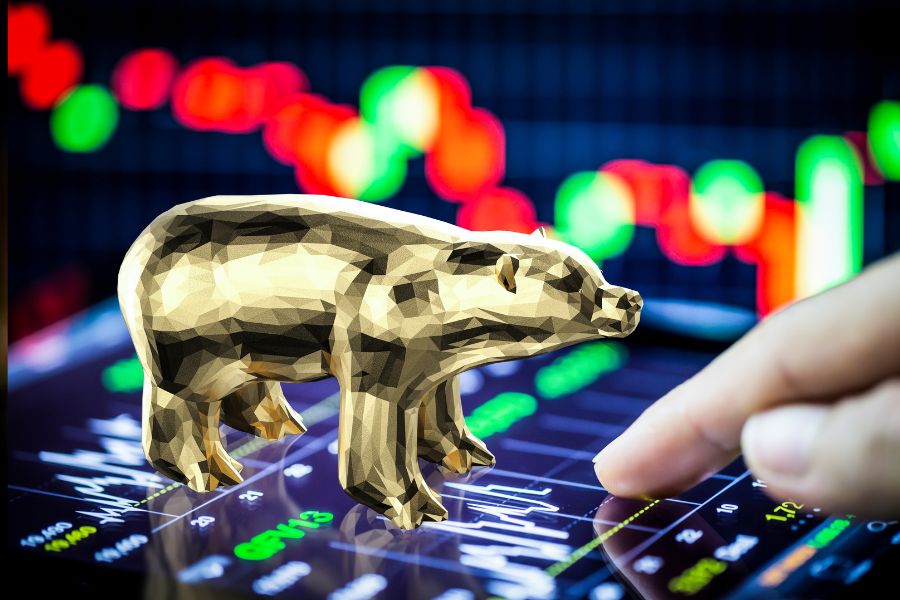The economy and the stock platform are intertwined, as the companies whose stocks are traded are actively involved in the larger economy. When the economy is sluggish, consumers do not spend enough on their purchases, resulting in decreased profits for businesses. The lower profits on the stock market directly affect the stock market valuation. Conversely, during a bull market, the economy grows, and people spend more, which in turn boosts the stock market valuation.
Bear markets force investors to re-examine their investment strategy and their risk tolerance. Investors near the end of their investment timeline have less time to recover from a bear market dip, but historically, they recover in less than two years. When this time comes, investors should not be afraid to invest in a stock that is undervalued. Bear markets often occur at the end of a period when investors may have waited a long time for the market to turn.
In order to determine which market is in a bull or bear phase, we should first define the underlying conditions. During a bull market, more money is invested in various financial products, while a bear market causes investors to sell some of their assets. When prices are low, investors can afford to invest more money in a wide range of different assets. However, when prices drop, it is time to consider the long-term impact of the market on the economy.
In this article, we’ll discuss about the bearish and bullish markets.
Signs of a Bearish Market
There are many signs of a bearish market. In addition to economic indicators, a bullish market usually indicates rising stock prices. Investing in a bullish market requires a trend-following investment strategy. A declining economy is another sign of bearish territory.
A reduction in the price of stocks or other assets is a common sign of a bearish market, though the exact sign is often difficult to determine. Typically, the bear market is preceded by a drop of 20% or more. While most signs are not readily apparent, traders and analysts employ numerous systems and indicators to detect bearish signals. Some of these indicators include moving averages, MACD (moving average convergence divergence), Relative Strength Index, and On-Balance-Volume. If you have ever traded in a bear market, you know that the reversion to mean will happen.
Creating a Trend-Following Investment Strategy
Creating a trend-following investment plan requires little research and does not involve making gut decisions based on your own intuition. It is also distraction-free during 24-hour news cycles, fundamental analysis, sensational hype, black boxes, and magic formulas. This strategy is suited for the long-term investor and has been successful for many investors.
When creating a trend-following investment plan, keep in mind that your goal is to profit from trends. Bear markets are less profitable than bull markets due to the large absolute returns in few asset classes and increased stress. As the bear market progresses, you must adjust your plan and stay in the market until prices start to recover. However, a trend following an investment strategy can still provide significant profits, especially if you stick to it for a long time.
Investing in a Bullish Market
Investing in a bullish market can be difficult. The market has been nearing its all-time high for months, and most stocks are increasing in value. However, experienced investors are focusing on the “value stocks” that are often a safer bet than expansion shares. Value stocks have historically underperformed growth stocks and are generally considered safer due to their low volatility. As a beginner investor, you should focus on value stocks, but don’t be too concerned about volatility, as value stocks are the safest to invest in.
Investing in a bullish market requires you to buy an early bullish market and sell when the trend reaches its peak. The gains that you can make during a bull market are often minimal, and losses are temporary. Investing in a bull market is a great way to get into the market and maximize your profits. But be sure to stick to your investing strategy, or you will have to worry about missing out on great opportunities.
Investing in a Bearish Market

The best time to invest is before the market has fallen by about three-and-a-half percent. If you are considering investing for the long-term, bear markets will test your resolve. However, they won’t last forever. Engaging money in stocks for the long run is far more important than investing for the short term. If you are planning to retire in 15 years, you might want to keep investing in 401(k) or IRA accounts until you reach that goal. Bear markets usually recover in three and a half years.
A bear market does occur when stock prices have got declined by at least 20% from their peak. Bear markets, on average, last one year, while bull markets last multiple years. It is common for investors to make drastic changes to their portfolios during a bearish market, but they shouldn’t. Intending to time the market proves to be a losing proposition. Instead, make purchases because you want to own a business in the long run. In a bear market, you need to remain calm and focus on your long-term goals. You can achieve this by diversifying your portfolio into defensive stocks such as consumer staples, healthcare, and utilities.
The Final Say
While bull markets tend to be short-term, bear markets can last for years or decades. Bearish market strategies include short selling, inverse ETFs, and put options. Bear markets occur because stock prices reflect the expectations of future cash flows and profits. When growth prospects wane, the stock price falls. Bear markets can be triggered by herd behavior, resulting in long-term depressed asset prices.
